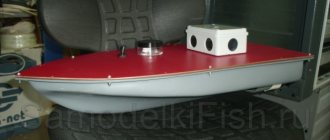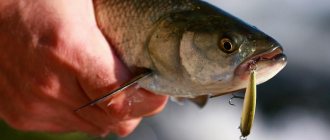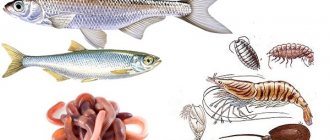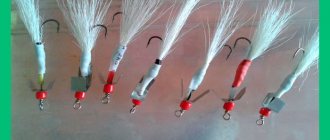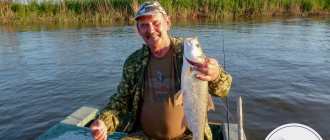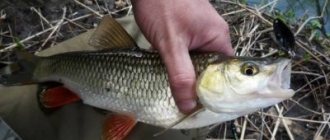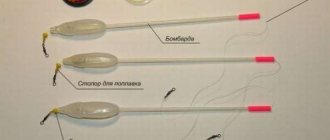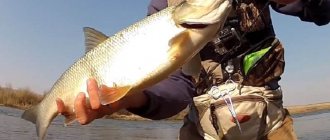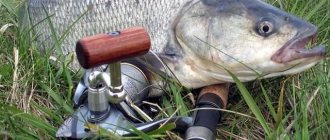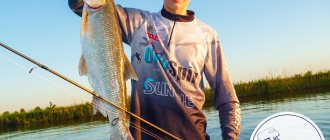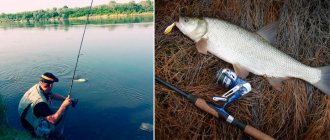Tackle, such as a boat, allows you to fish at a considerable distance from the shore, without a boat. It is more preferable in choice, since even a boat scares away fish. A boat will help you catch such wary fish as asp, ide, chub and pike. This tackle, which was successfully used by our ancestors, is capable of delivering bait far from the shore, where cautious fish, without suspecting anything, will certainly attack it. It is impossible to buy this tackle, since it is not for sale, but making it at home is not at all difficult.
How to make a fishing boat
This fishing device has several names, but mainly it is called a “water kite”, and also traditionally a “boat” and this name is much more suitable. Tackle is made from any material that has positive buoyancy. Basically, it is wood or foam. It is desirable that the structure have a certain weight, otherwise it will not be stable on the water, especially in the presence of wind and waves. Drawings of such gear can be easily found on the Internet. At the same time, you should not try to repeat the first drawing you come across. It's better to start by reading the reviews.
The simplest "ship"
To make a simple tackle, you need to have:
- A couple of planks of arbitrary length, up to 15 mm thick.
- Drying oil.
- Waterproof paint (oil-based), soft shade.
- A couple of M6 threaded studs and four nuts for these studs.
- A regular bracket with an M4 nut and a screw to secure the structure and the main line.
- Lead weight.
- Nails or screws for fastening.
- Glue (waterproof).
- Drills of the appropriate diameter.
If all the components are prepared, then you can begin assembling the structure itself.
The order is as follows:
- The finished boards are covered with drying oil, dried and covered with soft oil paint. The tackle should remain visible from a distance, but not scare away the fish.
- Elements similar to trapezoids are cut out of wooden planks. There should be oblique cuts on the side faces. In this case, it is better to first prepare the boards of the desired shape, and then open them with drying oil and paint.
- Holes are drilled in wooden blanks for their fastening.
- The two workpieces are connected using studs and nuts.
- After this, the bracket is attached. Holes for attaching it should be made on both sides so that the bracket can be rearranged if necessary, since you have to fish both on the left and on the right. The bracket is attached to the side where the water flows. This allows you to launch the “boat” in any direction of the current.
- Finally, a lead weight is attached to the bottom of the structure using glue. The load will make the structure more stable.
The ship is ready for use; you just need to attach the equipment elements to it.
DIY reversible boat
In the process of using the “boat”, experienced fishermen had an interesting idea, which led to an improvement in the design of the gear. The improved boat consists of:
- From the lead board.
- From the main float.
- Made from leaf springs.
- From a special switching device and a limiting element.
- From the towing line.
- From flies.
The springs included in the design serve as a kind of shock absorber that smoothes out strong jerks of the fish during bites. The float is included in the design of the reverse mechanism, and also gives the entire structure more stability. The safety bracket prevents the line from tangling with the controls. The switching device is designed to change the direction of movement of the “ship”.
Manufacturing stages
- For the construction of fishing gear, you should take well-dried wood. To give the structure a small lifting force, it is given the desired shape.
- To prevent the structure from floating to the surface of the water, a redan is attached to the lower end of the board.
- The wooden base is impregnated with drying oil and painted with waterproof oil paint. The underwater part is painted blue, and the surface part is painted white.
- A hole with a diameter of 8 mm is drilled in the middle of the board to attach a lead weight.
- At the upper end of the board, between the springs, a strip of cork is attached, where the flies are supposed to be stored.
- The spring is made of stainless steel strips, 0.8 mm thick, 10 mm wide and 320 mm long.
- The float is made of polystyrene foam. It, along with the switch and springs, is attached to a wooden base.
- A strip of stainless steel is taken and a switch is made from it. Strip thickness 1 mm.
- The safety bracket is made of copper wire, 2 mm thick.
Springs made of stainless steel plates are bent so that the switch rises above the waterline to the height of the underwater part of the float.
Such gear is capable of moving both in the direction from the shore and vice versa. This allows you to control the movements of the tackle. As a rule, a simple structure is always located at one point.
Guide to making a fishing boat
Today we’ll talk about such equipment as a fishing boat. Not the one that carp anglers use to bring in bait, but the gear that was used by our ancestors for long-distance fishing before the invention of spinning and fly fishing.
The boat, or sleigh, works on the same principle as the water kite. Due to the peculiarities of the shape and fastening of the cord, under the influence of current or wind, it is able to move away from the shore a considerable distance. The use of reverse in the latest models allows you to change the direction of movement of the water glider to the opposite.
Places of application
And in our time of advanced gear, there are places and conditions in which a boat for fishing can be indispensable. In addition, many fishermen simply like this type of fishing, it is sporty, exciting and fills the body with adrenaline when biting and fishing.
Thus, this tackle is used in the following cases:
- when fishing at a very long distance with surface baits;
- under the banks with tree branches hanging over them;
- in overgrown reservoirs with the impossibility of placing spinning baits;
- when the fisherman likes this method.
The best and easiest way to use boat fishing is in bodies of water with a current, where the force of the water flow presses on the surface.
In still water they fish using the power of the wind; in calm conditions an air glider will not fly, and a water glider will not float. We will talk about the design features for different conditions below.
How it works?
For an inquisitive mind, it is always important to know not only how a mechanism works, but also why it happens. In the case of a boat, everything can be explained using the example of the oldest such gear.
Reconstruction of a fishing boat
Imagine a piece of log about 40 centimeters long and 10 centimeters in diameter. The ends of this stake were sharpened, and two ropes were attached to them, one 20 centimeters long and the other 40 centimeters long. The rope was tied at this point, often on a ring, and to a working cord with a garland of two or three thin leashes was tied with it. A certain angle of attack was obtained: the current pressed on the log, and the fisherman, loosening or tightening the main line, maneuvered with the distance from the ship to the shore.
After the bite, the fish were brought ashore along with the boat.
This gear is used to catch predators and peaceful fish using surface baits, which can be either natural or artificial, for example:
- chub;
- ide;
- asp;
- pike;
- perch;
- carp;
- grayling
Depending on the type of fish, the baits with which the boat is equipped are used, these can be:
- bread crust;
- floating boilie;
- artificial fly fly;
- live insect;
- live bait;
- little frog.
Design
Fishing ships are currently manufactured in the form of catamarans of various modifications. In this case, the near plane or float is made low, and the tackle control elements are attached to it.
The second plane is made larger, and some craftsmen generally make it interchangeable depending on fishing conditions, for example:
- A part with a large surface part is better suited for fishing with a boat in a still body of water, using the power of the wind.
- The large underwater part is used in weak currents.
- In medium and strong currents, the size of the hydrofoil is reduced: the faster the current, the smaller the plane.
- For fishing on riffles, where the water glider can overturn, the lower plane is cut out in the shape of a semicircle.
On the near plane there are rings or brackets for attaching the working cord. Usually there are two of them for fishing from one bank or another, depending on the current.
The following rule is observed: if you are standing on the left bank, then attach the working cord to the right ring, if you look at the boat from the side of the fastener, and vice versa.
We remind you that river banks are named by their location relative to the direction of the flow.
Leashes are attached to the working cord with snap hooks or using the loop-to-loop method. The distance from the ship's hull to the first attachment point must be at least two meters. The distance between leashes is usually 1.5 meters with their own length being 350-500 millimeters.
The working line is attached to a large inertial reel with easy movement, for example, the same “Nevskaya”. The diameter of the fishing line depends on the power of the fishing boat and the conditions of use and varies from 0.30 to 0.60 millimeters.
To control the tackle, the reel is mounted on a powerful fishing rod. As it you can use Soviet aluminum forms or products of Chinese comrades under the brand name “Crocodile” or “Alligator”.
Catching
The process of fishing on a boat, regardless of fishing conditions, looks like this:
- The tackle is placed on the water and waited for it to float away a little under the influence of the current.
- Leashes are provided. Their number and the distance between them depends on who you are hunting and what bait you are using.
- The ship is equipped, fishing has begun.
- By tightening or loosening the fishing line, we bring the glider to the desired fishing distance, where, in our opinion, there are asp, chub, pike or other fish.
- At the required distance, depending on the bait used, you can either swim it freely or play along with it in some way.
- The bite is determined either visually or felt by hand.
Manufacturing
Despite the fact that factory models are already appearing on sale, most fishermen make a fishing boat with their own hands. We will describe the manufacture of the simplest model, in our opinion, the materials for which can be easily purchased in the retail chain.
We will describe a model with average parameters; for fishing in other conditions, the characteristics will need to be changed or additional planes made. The requirements for them were described in the “Design” chapter.
We start making the boat by cutting out the planes. For the sides we use wooden boards, preferably made of hardwood, with a thickness of 12 to 22 millimeters. We draw drawings of the blanks on the board and cut them out along the contour with a jigsaw.
They are trapezoidal in shape with the following dimensions:
- The large distant plane, also called the leading one, has a height of 120 millimeters, and the bases are 350 and 230 long.
- The small near trapezoid, or supporting one, is made with a height of 90 millimeters, with base lengths of 300 and 220.
We cut the inclined side edges of the trapezoid obliquely so that they can more easily cut through the wave. After finishing the carpentry work, the planes are ground and impregnated with drying oil. When the drying oil dries, you can paint the sides. To visualize boat fishing, the parts protruding from the water are painted white; stripes of red or yellow can be added. The underwater part is covered with a blue or green color for camouflage.
The planes of the catamaran are connected in several ways:
- screw studs with nuts;
- strips of metal;
- slats on the top of the boat.
The distance between the planes is maintained from one hundred to two hundred millimeters. Two brackets are attached to the supporting plane for fastening the work cord.
Ship under construction
The last thing you need to do is load the planes. To do this, lead or steel plates are attached to them from below. Most of the catamaran, like an iceberg, should be under water, with the exception of models designed for wind pressure.
The ship is ready for launching
Loading must be done so that the structure does not skew to one side. Ideally, the planes should form a right angle with the surface of the water.
Reversible boat
In order to be able to move in different directions, they came up with a device that turns an ordinary ship into a reversible boat. To do this, a special device is attached to the supporting plane or float.
The boat is equipped with a reversing mechanism
The reversing switch consists of the following parts:
- Base for mounting the mechanism. This can be a metal plate into which a bolt is screwed, which will serve as the axis of the lever.
- Lever movable on an axis to change direction. It can be made from a strip of metal. The hole in the strip will make it possible to place the lever on the axle and secure it with two nuts.
- A bracket to protect against line entanglement is placed above the lever. It could be a simple piece of insulated wire.
- The support for tensioning the elastic is a hook attached at the bottom of the support plane.
- Rubber band for fixing the lever. Better is an aircraft model or a “whale” one made from a plug.
The mechanism works as follows:
- The work cord is attached to a movable arm.
- When tensioned, the cord presses the lever to one side, and the elastic pulls it in the opposite direction.
- When the cord tension is released, the elastic will return the lever to a position perpendicular to the planes.
- A sharp jerk of the cord will throw the lever in the opposite direction, and the direction of movement will change.
To make the mechanism obedient, you need to carefully select the elastic band and its tension under the resistance of the water, so that the reverse does not work spontaneously.
lovlyavsem.ru
Operating principle of a fishing boat
The “ship” must have positive buoyancy. Given the fact that there is a flow, the geometry of the device must have special shapes.
The action of the “boat” is similar to the action of the “kite”. The only difference is that such gear is driven not by air, but by water. Thanks to this operating principle, the bait always ends up in the right place. The “boat” can only be used in conditions where there is a current or a strong wave that can move the gear to the desired location.
Construction of a boat on an asp
The two boards are connected using 150 mm stud bolts. The bottom edge of the boards is equipped with a weight made of lead plates. It is necessary to achieve almost complete immersion of the boat when it is free floating. In the loop, the winding ring is attached to each bolt on the front plank of the boat. We attach the swivel from the base line to the winding ring. If fishing is carried out along the right bank, then attach the swivel to the left winding ring, and vice versa. The boat is controlled by a strong thick fishing line and moves further and further from the shore until it reaches a position perpendicular to the shore.
From the boat, after 6 meters, we tie 2 leashes with a fishing line section of 0.3 mm, 35 and 50 cm long. The parameters of the leashes are determined on the spot in accordance with the height of the shore. With the correct selection of hooks, they simultaneously touch the water surface. The best option is number 7 or 8 of the two-hinged type. The leash slides freely along the base line through the limiter nodes. To prevent the carabiners from slipping through the knots, they are tied through a vinyl chloride washer. We use local insects as bait.
- Worth knowing! The asp is characterized by clean water and fast currents, so its habitat is wide and shallow sandy rifts. In seething, boiling water, it hides in grassy hummocks, snags and other obstacles.
It is initially important for the fisherman to find a feeding area for the asp. Like an ide, it is located in a long-chosen place. For a boat, it is better to use rifts, a steep bank in the absence of thickets.
Carrying out preparatory work
The use of a “ship” involves the use of a fairly powerful spinning rod, with a dough of 100 to 200 grams. There are times when you have to pull out fish not with a spinning rod, but with your hands.
For such fishing conditions, it is possible to use an inertial reel, dating back to Soviet times with an open drum. As a rule, fishermen use a “Neva” reel with a drum, which holds a lot of fishing line.
Any strong fishing line of appropriate diameter will be suitable as the main fishing line. The thickness of the fishing line has no effect on fishing performance. The diameter of the fishing line for leashes is selected depending on the size of the intended prey. For normal fishing conditions, it is enough to have leashes with a thickness of 0.12-0.15 mm. If you intend to catch individuals weighing up to 0.5 kg, then it is better to choose a fishing line with a thickness of 0.18-0.2 mm.
How to catch an asp on a boat
Date: October 25, 2010 | 814
Asp is a beautiful and strong fish. The only pure predator of the carp family. It is difficult to catch him, he is very careful. Fishing for asp fishing for asp in rivers is really difficult and exciting . It is to the riffles of small and medium-sized rivers that real asp hunters go.
In this post I want to focus on the boat or water kite, a fascinating and unique way of catching river asp. Catching an asp with a water snake has one peculiarity: there is no point in going with this tackle to an unfamiliar river, even knowing for sure that the asp is found in it. You should visit the river at least a couple of times with a spinning rod to identify the rifts and rapids where the asp comes out to hunt . And only after tracking him down can you go to the river with a boat.
It must be said that it is not difficult to find asp hunting areas . He will give himself away with powerful splashes when he drowns out the fry with his heroic tail. Difficulties begin when you need to force the asp to take the bait and not scare him. This is really the problem. And the water serpent, one of those tools that allows you to outwit the sharp-eyed asp.
What is the design of a water kite ? Here the principle is the same as that of a kite, only the driving force is not the wind, but the river flow. The kite itself is a board made of light wood (the low-resin part of pine, alder, linden), surrounded by a lead plate on one side. The snake is equipped with a kind of leash-bridle made of thick fishing line, usually three, which are brought together at one point and tied to the main fishing line through a swivel.
Leashes are attached to the main line of the tackle, at a distance of 2-3 meters from the kite. There are usually 1, 2 or 3 leashes. The larger the expected asp, the fewer leashes. You need to take large hooks, since the asp has a big mouth. Only if you have to catch a small asp using a grasshopper , the hook size is reduced.
It is more convenient to place the main line on an inertial reel with a large drum, since the reel is not convenient to use, and an inertia-free reel will spin the line, and this is useless. The length of the fishing line must be at least 50 m, and on larger rivers up to 100 m. For better maneuvering of the tackle, use a short hard spinning rod .
The bait used when catching asp on a water snake is quite varied. First of all, these are fry of perch, large beetles, dragonflies, butterflies, grasshoppers, but you can also catch with worms, maggots, etc.
The technique of catching a water snake is quite simple. You need to track down the roll where the large asp strikes . Hide far away in the bushes so as not to scare away the wary fish. Attach the hook and smoothly lower the kite into the water. Guided by the force of the roll, the kite will easily deliver your bait to the asp’s feeding area . By smoothly playing with the bait, or bouncing it on the surface, you need to provoke the predator’s grip .
Share with your friends:
Category: How to catch...
Tags: Asp, Ship, Surface, River
The most detailed information about online loans around the clock is here.
Fishing technique with a boat
Such tackle shows good results in three cases.
Fishing on moderate rivers
The fishing technique is more suitable in cases where the depth near the shore is no more than 1 meter, and the shore is overgrown with bushes and trees. Usually, ide stands in such places, waiting for some living creatures to fall from the branches and leaves of trees and bushes.
In such cases use:
- Ship.
- Spinning rod with dough from 40 to 100 grams, up to 3.3 meters long.
- Leash, about 2 meters long.
- Hooks or small tees.
- Butterflies, grasshoppers, dragonflies, and other large insects.
Basically, all fish are shy and afraid of any movement along the shore, especially in bright clothes. Therefore, first of all, you should take care of camouflage.
As a rule, in such cases, you should count on bites closer to the surface of the water. This can be achieved by using floating artificial baits, which can be flies that imitate various insects.
If a bite is identified, a soft hook should be carried out. Given the specifics of the gear, the fish will not be able to immediately feel the resistance of the fishing line.
The use of a “boat” on wide thresholds
In conditions where the reservoir is very deep, including near the shore, a “boat” will always help out. Typically, in such cases, three or four leashes with sinking fly fishing flies are used. When using treble hooks or double hooks, the number of fish escapes is minimized.
How is the “ship” used?
- The leashes should be higher than the main line, which is done with a sharp movement of the spinning rod.
- The spinning rod must be directed in the direction of the current.
- In this case, the flies float freely on the surface of the water for about three meters. This allows you to deceive the fish, but only during periods of the presence of various insects.
Take the fish only with your hands, after all the fishing line has been wound onto the reel.
Fishing on rivers with slow currents and dense vegetation
As a rule, pike prefer to be in dense thickets of coastal vegetation. In this case, it is difficult to take pike both from the shore and from the boat. And here the “ship” can come to the rescue again.
Equipment of the "ship":
- As a rule, a predator such as pike is caught using live bait. Therefore, a live fish or frog is suitable as bait. The frog is considered the most tenacious, so it is better to give preference to it.
- It is better to take braided fishing line as leashes. If you take monofilament fishing line, then its thickness should be in the range of 0.4-0.5 mm.
- The frog clings to double or triple hooks. At the same time, you need to make sure that the tips of the hooks are slightly peeking out.
- After the “ship” leaves, leashes are attached to a considerable distance. They are connected using a loop-to-loop method, as well as using carabiners.
- The leash from the leash can be located at a distance of two to ten meters. If there is a fast current or dense vegetation, one leash is sufficient, since more leashes are more difficult to control.
If the tackle is ready for use, then you can begin fishing the planned area, rising or falling from the roll. As for the type of wiring, it can be anything. The bait (frog) can be immersed in water for several minutes, and also tapped on the surface of the water in places where there is no vegetation. If the vegetation is not very turbulent, then the frog can simply be dragged along the grass. At this time, one of the leashes should pass along the edge of the vegetation, and the other leash should catch windows of clean water. Pike can bite at any time and anywhere. In this case, much depends on the nature of the reservoir and the presence of pike.
“Boat” is an interesting piece of equipment that you need to know how to use. With its help it is possible to deceive anyone, even the most cautious predator. With the correct use of gear, a catch is always guaranteed. The main thing is to present the bait correctly and use it correctly.
As practice shows, using a “boat” requires special skills, and the gear is very unique. This is not a fishing rod that can be cast and immediately pulled out of the water in case of a single bite. You won’t be throwing in and out of the “ship” over and over again. There must be a clear calculation for catching a large specimen. Typically, the “boat” is used to catch predators with live bait. Live bait, if properly placed on a hook, can live under water for more than one hour, which suits anglers quite well. You can launch the “boat” and wait for a bite for several hours. If it is missing, you can pull out the tackle and check it, and if necessary, replace the nozzle (live bait).
The principle of operation of a fishing boat
The operating principle of a fishing boat is similar to that of a kite. Having lowered the boat into the water, you release the fishing line from the reel. The wind, the current and your walking along the shore make it possible for the boat to sail a given distance.
Next, if a bite occurs, you will immediately feel a blow to your hand and begin to pull the boat towards the shore.
Watch the video on how to make a boat (catamaran) for fishing from improvised means and how it works on the water - fishing with a boat:
NHNCH (No tail, no scales) to everyone!
Follow my new publications - it will be even more interesting!
